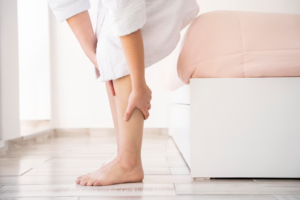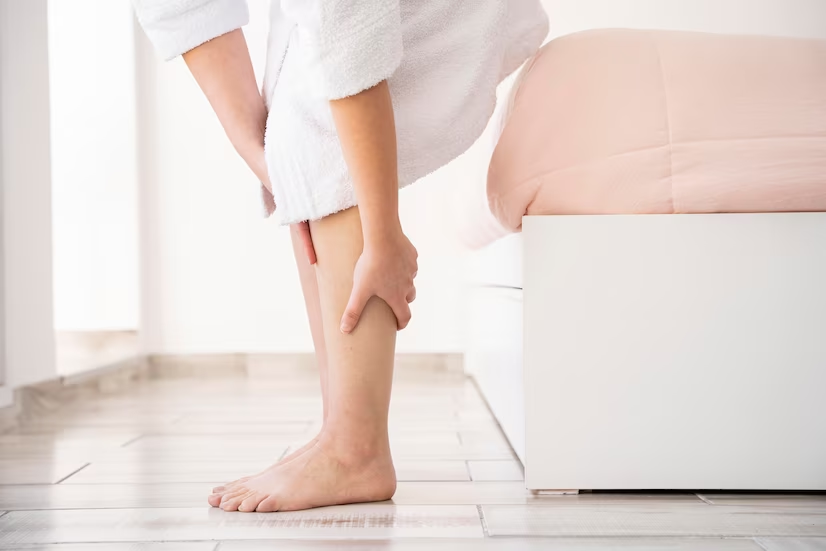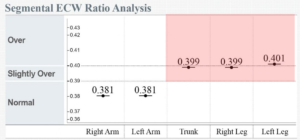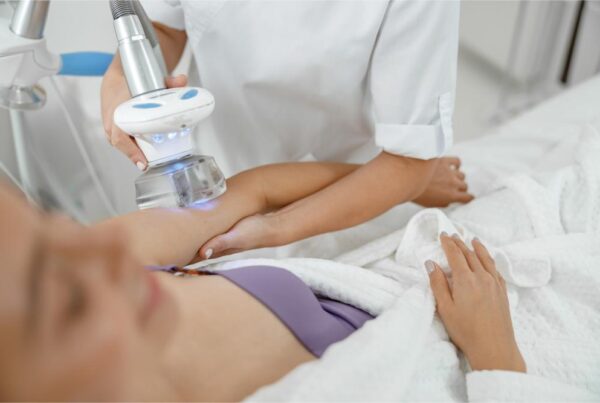Swelling, also known as edema, is a common condition that can cause discomfort and affect daily activities. It can occur in different parts of the body, such as the legs, arms, and face, and can be caused by various factors.
In this blog post, you will get to discover the benefits of exercise and other remedies for how to reduce swelling in feet. However, please note that if you have any other medical conditions, it is important to consult with your doctor if you experience any edema symptoms.

1. Exercise Helps in Reducing Swelling in Feet
Prolonged sitting or standing in one area, such as at work, can cause swelling in your feet. To prevent this, try to move around for a few minutes every hour. You can take a walk to the break room, go around the block during lunch, flex your knees and ankles, or take a lap around the office.
Some low-impact exercises that can help reduce swelling include walking, cycling, swimming, and yoga. It is important to start slowly and gradually increase the intensity and duration of exercise.
High-intensity exercise can lead to the accumulation of pulmonary fluid and result in edema. Therefore, it is important for beginners to consult a healthcare professional if they experience edema symptoms before engaging in high-intensity exercise.
2. Get Compression Socks
Compression socks and stockings are designed to provide the strongest pressure around the ankle, with decreasing pressure as the stocking goes up the leg. They are commonly used to reduce swelling in the legs and improve circulation.
To determine which compression socks are best for your situation, you can consult with the pharmacist at the drugstore.
3. Elevate Your Feet
Elevation can help reduce swollen feet by working with gravity to encourage fluid to flow away from the swollen area and back towards the heart. By raising the swollen part of the body above the level of the heart, you can promote better circulation and decrease the fluid buildup that contributes to swelling.
Holding the swollen part of the body above the level of the heart several times a day can help reduce swelling. Try elevating your feet with cushions and pillows while you sleep. You can also elevate your feet for about 20 minutes several times during the day using a chair.
4. Massage and Cold Therapy
If you experience edema symptoms for the first two weeks, try applying ice to the affected area for up to 20 minutes per hour for the first three days after swelling occurs. This can help reduce inflammation and swelling.
However, seek the help of a health practitioner if your edema symptoms have persisted for more than two weeks.
In addition, gently massaging the swollen area with circular motions using your fingers can promote circulation and encourage excess fluid to move away from the area.
This technique can be particularly effective when combined with other remedies such as compression, elevation, and cold therapy.
It is important to note that while massage can be beneficial, it is important to avoid massaging too vigorously or using too much pressure, as this can actually worsen swelling and cause further discomfort.
5. Diet and Hydration
Maintaining a balanced diet that is low in salt can be beneficial for reducing fluid retention and swelling. This can be achieved by including a
variety of fruits and vegetables, lean protein sources, and whole grains in your meals.
Additionally, staying hydrated by drinking an adequate amount of water can help promote the movement of anti-inflammatory chemicals throughout the body, which can further help reduce swelling and inflammation.
Therefore, it is important to make sure you drink enough water throughout the day to reap these benefits.
How to Monitor Swelling with ECW Ratio in InBody?
The ECW Ratio in the InBody Result Sheet is a measure of the ratio of extracellular water (ECW) to total body water (TBW). ECW is the fluid outside of the cells, while TBW is the total amount of water in the body, including intracellular water (ICW) and ECW.
In healthy individuals, the average ratio of ECW to TBW is around 0.380, and the acceptable range is between 0.360 to 0.390. Any value beyond this range may
indicate swelling or excess ECW.
By taking multiple InBody tests, you can establish your normal fluid status and determine any imbalances in the ECW Ratio.
The InBody Result Sheet provides a set of ranges for various measurements, including BMI, PBF, and ECW/TBW. It can be a powerful tool to monitor fluid balance and guide healthcare decisions.
Conclusion
Swelling, or edema, can be uncomfortable and impact daily life. While medication and medical procedures can help treat swelling, there are also natural remedies that can alleviate symptoms. Exercise can promote blood flow and reduce swelling, while compression socks, elevation, massage, and cold therapy can also be effective.
Additionally, monitoring the ECW Ratio in InBody Result Sheet can help you identify imbalances that may indicate swelling or excess fluid in which part of your body. By adopting these strategies and consulting a healthcare provider if necessary, you may able to reduce swelling in your feet.
However, if the edema is persistent, it is important to seek medical attention as it may be a sign of an underlying medical condition.














